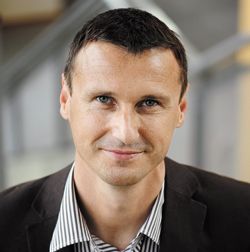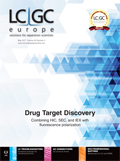(U)HPLC: The Shape of Things To Come
A recent argument was raised in the scientific press that in pursuit of greater speed and separation resolution, ultrahigh performance liquid chromatography (UHPLC) is faced with practical limitations and will struggle with its own version of Moore’s law.
A recent argument was raised in the scientific press that in pursuit of greater speed and separation resolution, ultrahigh performance liquid chromatography (UHPLC) is faced with practical limitations and will struggle with its own version of Moore’s law (1).
This empirical law was first proposed to describe the long-term progress made in the micro-electronics industry. Moore’s law states that speed and memory storage capacity are roughly doubling every two years. Progress is occurring by shrinking the distance between the transistors on the chips to cram even more of them on the same surface. However, the current spacing between the transistors is already down to a dazzling small 22 nm, and most theoretical models predict that the fundamental laws of physics will prevent the distance being reduced below 10–7 nm. It is clear that Moore’s law will one day run into a hard stop and bring a halt to the advances in speed and data storage if the electronics industry does not find a new paradigm to store and manipulate data.
A gloomy parallel was drawn with (U)HPLC to emphasize that this field has been witnessing a Moore’s law-type of progress in speed and resolution over the past decade. This progress was essentially realized by making increasingly smaller particles, and it was suggested that (U)HPLC is also facing the end of practical progress with its own version of Moore’s law.
Most specialists agree that with pressure limits entering a range where the compressibility of the liquid makes it harder to precisely control the flow rate and where viscous heating threatens to become unacceptably high, we have now reached the stage of what can practically be achieved by particle size reduction.
Slip flow technology has been suggested as a possible way out of this, but its promises still need to be achieved in practice (2). Sub-micron particles may also be able to realize the ultra-rapid separations (in the order of a few seconds) needed in the final dimension of the best possible threeâdimensional LC (3D LC separations, but this is likely to remain a very niche application for a
long time.
However, the limits of Moore’s law in (U)HPLC only relate to packed beds of spherical particles. We should not forget the sphere is only one of the many shapes that are possible. Just think of monoliths, perfusion particles, and pillar arrays. Measured by Golay’s and Knox’s separation impedance number, these are far better shapes than the packed bed of spheres and hold the promise of a 10-fold increase in efficiency (for the same time) and even a 100âfold reduction of the analysis time (for the same efficiency). These approaches have not delivered their promise yet, some because of the lack of order and some because the size of the individual elements is still too large to reach their performance limit in a range of practical times or efficiencies-and some still suffer from both problems.
However, with new materials engineering possibilities, such as silicon micromachining and 3D printing, rapidly gaining widespread availability, it is highly possible we will one day see a commercially viable production technology that will be able to produce the perfect chromatographic column, breaking away from Moore’s law by trading our spherical particles for supports with a much more advantageous shape as measured by Golay’s and Knox’s separation impedance.
Let us not forget how this field recently defeated Moore’s law already, with the (re-)introduction of core–shell particles (representing a fundamental change of the particle design) leading to a large gain in speed and resolution. So, let us be optimistic and consider that maybe the next 50 years will be the era of support shape, rather than of support size. And with exciting contributions on the possibilities of silicon micromachining and 3D printing on the programme, the HPLC 2017 conference could be the start of this new era.
References
- M.S. Reisch, C&E News94(24), 35–36 (2016).
- B.A. Rogers, Z. Wu, B. Wei, X. Zhang, X. Cao, O. Alabi, and M.J. Wirth, Anal. Chem.87, 2520−2526 (2015).

Gert Desmet, Department of Chemical Engineering, Free University of Brussels, Belgium.

New Study Investigates Optimizing Extra-Column Band Broadening in Micro-flow Capillary LC
March 12th 2025Shimadzu Corporation and Vrije Universiteit Brussel researchers recently investigated how extra-column band broadening (ECBB) can be optimized in micro-flow capillary liquid chromatography.














